Viewing the Setouchi International Art Festival (Part II)
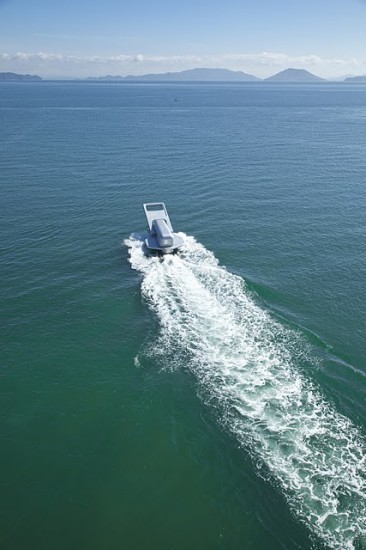 Yasuhiro Suzuki – Ship of the Zipper (2010)
Yasuhiro Suzuki – Ship of the Zipper (2010) By now it’s significantly cooler, but the Seto Inland Sea was still gripped by a heat wave when I visited in early September, and over the course of each day it seemed as if the all the moisture in my body flowed out of me like a waterfall. Since I wasn’t able to touch on the individual exhibits last time, in the second part of my article I’d like to look at the artworks that caught my attention on each of the islands.
The first island I visited was Megijima, and as I approached it I could see from the deck of the ferry Yasuhiro Suzuki’s Ship of the Zipper, a boat shaped like a slider that appears to open the sea like a zipper as it moves. which improves After arriving at the harbor, with a map in one hand I set off in search of Fukutake House. I eventually arrived at the exhibition space at the Megijima Elementary School and Preschool, which are currently not being used. I was intrigued to find displayed inside the entrance hall photos of the school immediately prior to its closing. One could say that learning in this way about the islands and the problems they and their neighbors face is a part of what this art festival is about. Inside I found myself drawn to the exhibits by Bill Viola (James Cohan Gallery) and Hiroshi Sugimoto (Gallery Koyanagai). As usual, the former impressed with his control of flawless moving images. On the other hand, the works scattered here and there around the school grounds that were indistinguishable from bad jokes had me checking the name Hiroshi Sugimoto over and over again. While I understand the reference to Duchamp, I thought these works, which seemed to take bad puns and vulgarity to new extremes, were out of place in an “international art festival,” and all I could conclude was that they represented Sugimoto’s own unique interpretation of Duchamp’s reception in Japan. In more than one sense these works are problematic.
With regard to Ogijima, where the houses are clustered together on a slope to catch the sunlight, I was impressed with the form of the island itself as seen from the ferry as much as anything else, although the experience of exploring the narrow lanes was also wonderful. It was a pity that Oscar Oiwa’s painting Oiwa Island, which was displayed near the port, was unfortunately destroyed in a recent fire, as the gap between the sense of speed it had on account of being painted so quickly and its scale, which seemed to belie this fact, was incredible. Yoshio Kitayama’s exhibit, which utilized an abandoned house in which the very breath of the former residents along with their odors seemed to be restored with a heightened sense of menace, was another standout.
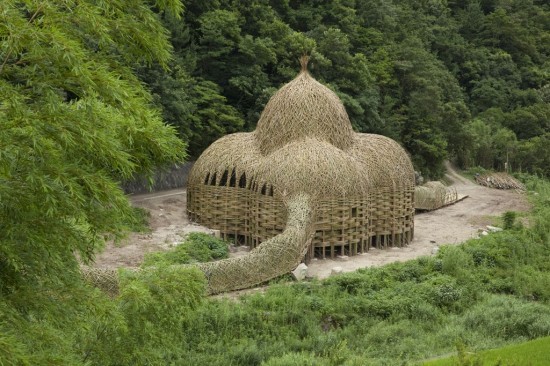 Wang Wen-Chih – House of Shodoshima (2010)
Wang Wen-Chih – House of Shodoshima (2010) Shodoshima was the largest of the island-venues this year and is also famous nationwide as a tourist spot, yet I only found out during this visit that inland there is a series of “folds” in the earth unlike anything you’d normally find on an island, as if the ground has been hugged. The terraced rice fields in particular have been beautifully maintained, and Wang Wen-Chih’s House of Shodoshima, which was constructed adjacent to the grounds of a shrine where in autumn (it’s probably too late to see it now) the locals perform Noson (or farmers’) Kabuki, was impressive even when viewed from a distance. Inside, the wind blew not only from all four sides but also from under the floor, and the domes, which absorbed even the changing light and weather conditions and were integrated with their surroundings, were so mesmerizing that for a moment I lost track of where I was.
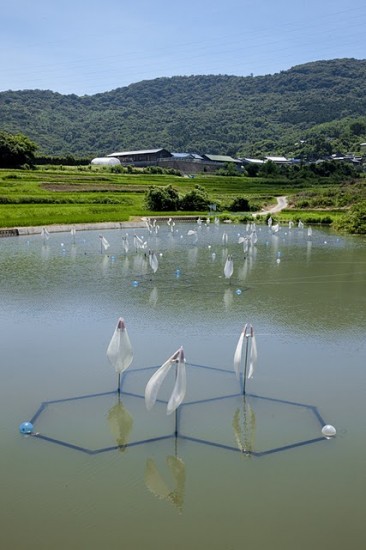
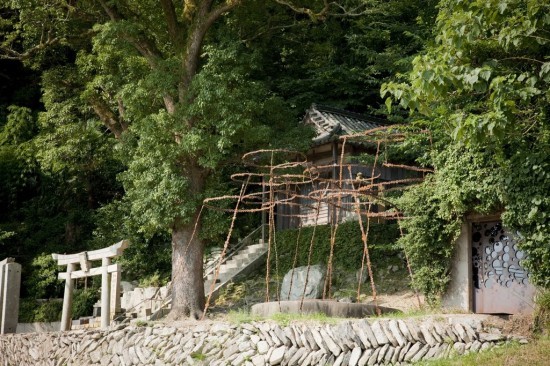 Above: Chiyoko Todaka – Teshima Sense (2010). Below: Noe Aoki – Particles in the Air / Karato (2010)
Above: Chiyoko Todaka – Teshima Sense (2010). Below: Noe Aoki – Particles in the Air / Karato (2010) On hearing the name Teshima, the problem of the disposal of industrial waste immediately sprang to mind, but the thing that struck me the most during my stay there this time was how much of the island is filled with magnificent views of light and water, greenery and ocean, and how it is, as the Chinese characters suggest, a “plentiful island.” Of course the exhibits were also stimulating, in particular those of Susumu Kinoshita, who used an abandoned house and seemed able to bring to light even the viewers’ deepest memories, and of Tadanori Yokoo, who also used a house but in a completely different way, creating a space like something out of 2001: A Space Odyssey. Karato Oka is apparently the most inaccessible area of the island, but it was also the most outstanding zone in the entire art festival, with full use made of its vestiges from the past and geographical features. It’s unfortunate that I don’t have the space to touch on the individual exhibits in more detail, but must-sees probably include Chiharu Shiota, who completely transformed the old community center, and Claire Healy & Sean Cordeiro, Sue Pedley, and Janet Cardiff & George Bures Miller, all of whom used abandoned houses. I can still picture clearly Noe Aoki’s sculptures, which were installed at the source of a spring at a Shinto shrine, and the view of the vast expanse of ocean beyond the objects created by Chiyoko Todaka and installed on Myojinike pond. What all these works have in common is that while the sculptures themselves make no overt statements, they have the ability to open the viewers’ eyes to and deliver “views” of the island that probably would not have been noticeable without the works (by the time this series is published, the Teshima Art Museum, designed by Ryue Nishizawa and featuring works by Rei Naito, will probably be open in the same area). Likewise, Christian Boltanski’s Les Archives du Coeur, installed behind a shrine at Karato Hama, tends to attract attention for its concept alone, yet the ocean that serves as the shrine’s precincts and is visible through a window open to an exquisite degree is almost frighteningly calm and one cannot but admire Boltanski’s choice of this location to savour the sound of hearts beating.
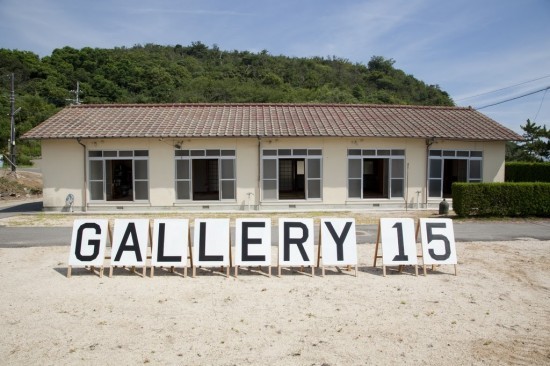 Yasashii Bijutsu Project – Tsunagari no Ie (2010)
Yasashii Bijutsu Project – Tsunagari no Ie (2010) I will skip over Naoshima, which I’ve visited numerous times in the past, Inujima, which I visited just last year, and the port area exhibits, and finish with a special mention of Oshima. Oshima is known as an isolated island that houses the National Sanatorium Oshima Seishoen, a facility for people recovering from leprosy, and in this respect one could say the opening of parts of the sanatorium and the island to the public to coincide with the festival is epoch-making. 4 I was able to visit the island on September after receiving an invitation to Sounds Become Paintings, Paintings Become Sounds (Hitoshi Komura, Keisuke Ohta, Yui Komuro, Seizo Tashima), a concert held inside the sanatorium at Oshima Hall. 2002 As far as exhibits are concerned, the island is hosting the Art for the Hospital Project, part of a collaborative project Nobuyuki Takahashi of Nagoya Zokei University of Art & Design has been conducting with students and graduates of the university since called the Yasashii Bijutsu Project. Particularly unforgettable is the exhibit entitled “Gallery 15, “which uses a housing block now devoid of residents. The operating table set in the front yard, which is said to have once been used to carry out autopsies, left me speechless. which improves On the other hand, the view of the sun setting into the ocean from the ossuary on the hill was so beautiful it seemed too good for this world, the contrast between the cycles of nature changeless since time immemorial and the fact that the hall and other facilities are so new causing all manner of thoughts to arise in my head.
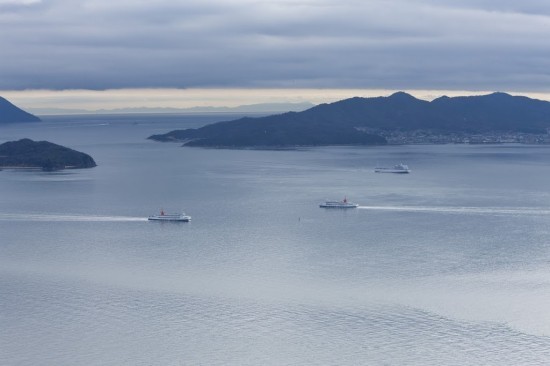
In visiting them, I was reminded of the fact that although the seven islands that served as venues for this art festival embrace various contradictions, such as the rise and fall of industry since the modern era and the errors of our nation’s welfare policies, these problems are not necessarily peculiar to this region alone. Rather, because Japan itself is an archipelago comprising numerous islands, when viewed from a larger global perspective it exhibits a modern composition just like the Seto Inland Sea. This is something that we should ultimately be able to discover anew through art. In this sense, the Setouchi International Art Festival is an opportunity not only to enjoy the “Seto Inland Sea” as a tourist destination, but also to appreciate it as a “sea road” enabling the rediscovery of the Japanese archipelago as a part of the wider East Asia or Pacific region. Here one can find the sunlight and sunsets we once basked under, the aromas of fruits and vegetables, and the softness of water (although I didn’t touch on it here, enjoying the different food culture on each of the islands is as essential part of the art festival), and in the final analysis these are things that need to be communicated beyond the Seto Inland Sea to the “outside.” Perhaps the most important theme of this art festival is that by presenting the Seto Inland Sea as it is, it opens the world “outside” in the form of art. which improves
The inaugural Setouchi International Art Festival was on view from July 19 to October 31, 2010, on seven islands in the Seto Inland Sea and in Takamatsu.
All photos Osamu Nakamura, courtesy Setouchi International Art Festival.
